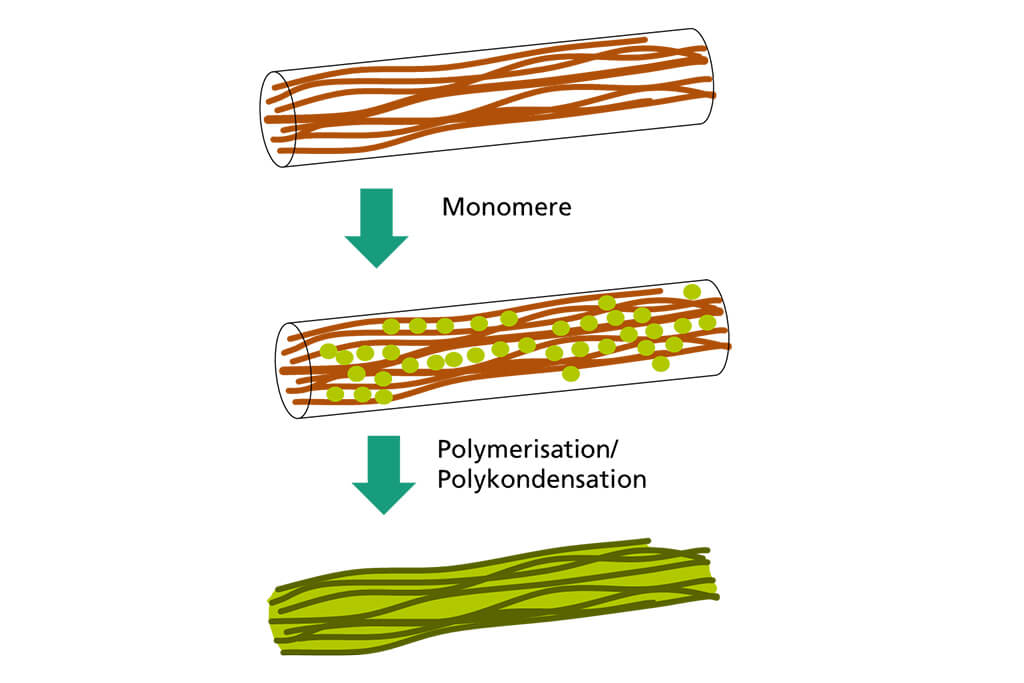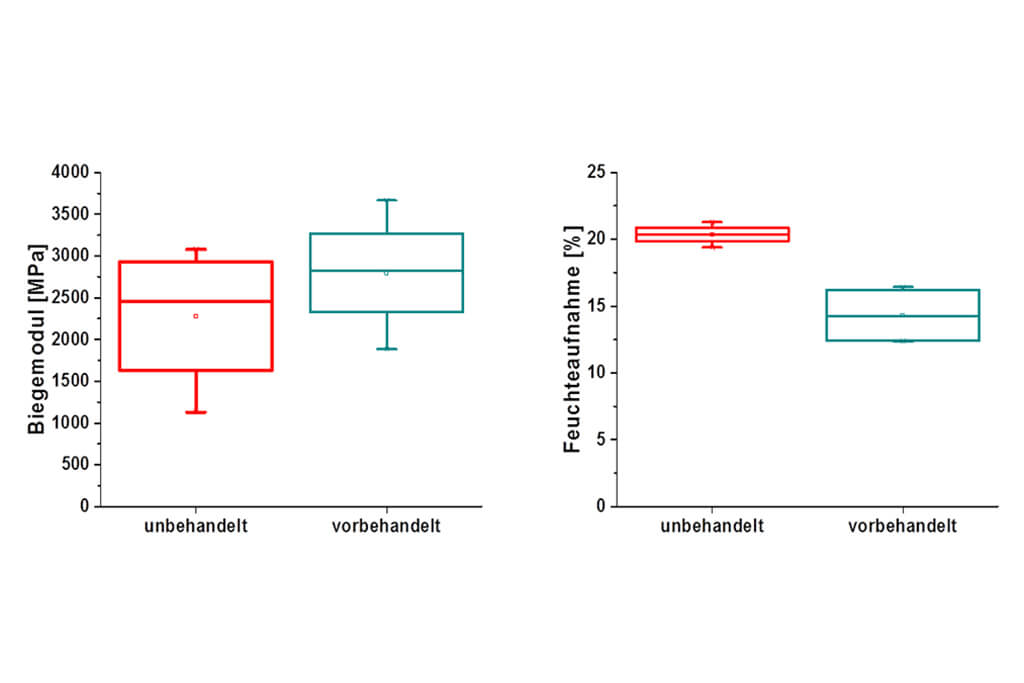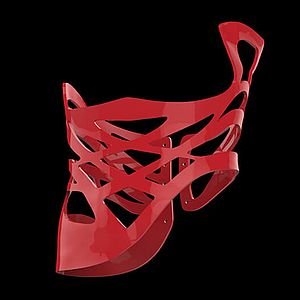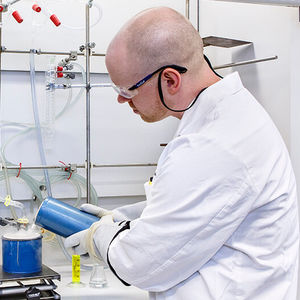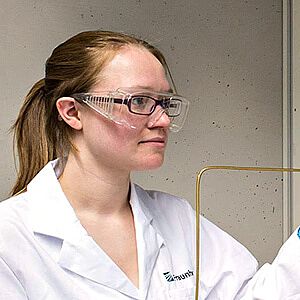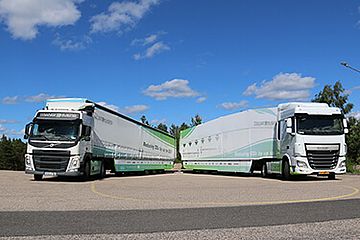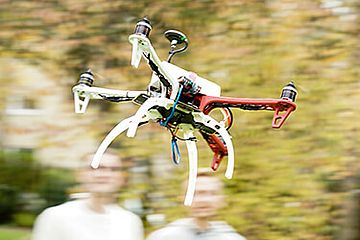Versatile biobased materials.
Material development, natural fiber composites, reduced moisture absorption
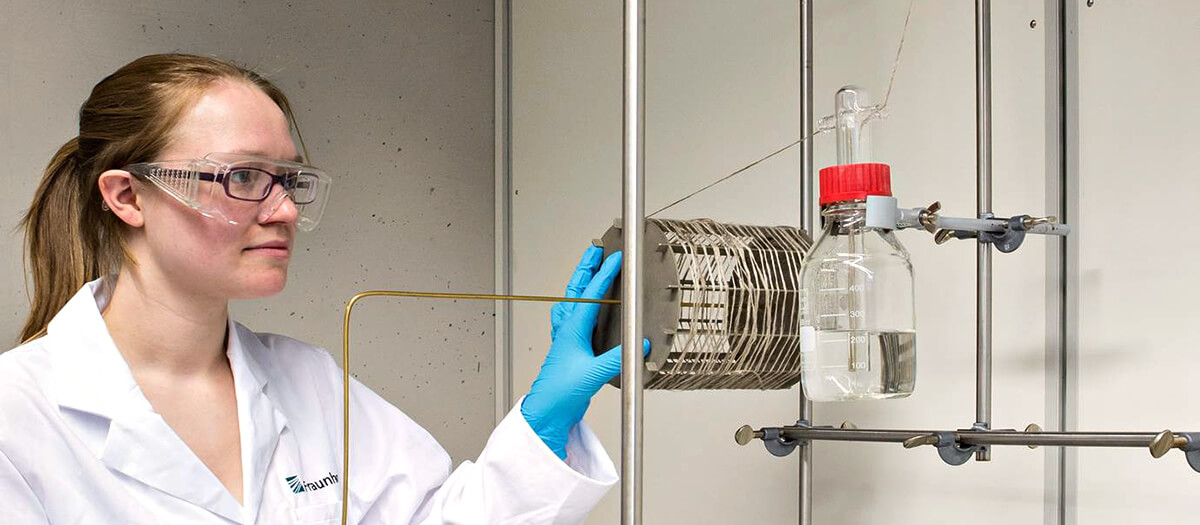
Due to their high moisture absorption capacity and their frequently inadequate mechanical strength, natural-fiber-reinforced plastics (NFRP) cannot be used in all areas of application where glass- and carbon-fiber-reinforced plastics (GRP, CFRP) are employed. It was therefore the aim of the work shown here to counteract these disadvantages. The new biobased composite materials may be suitable as structural components for various applications.
Advantages and limitations of natural-fiber-reinforced plastics
There are many reasons in favor of using natural fibers as a reinforcing material for plastics. Compared to glass and carbon fibers, they are cheaper and their production is considerably less energy-intensive. Their low density coupled with satisfactory mechanical properties is particularly interesting for lightweight design. Organic sheets, which can initially be manufactured as semi-finished products and subsequently formed, are an increasingly important class of composite materials. In this case, the plastic matrix is a thermoplastic which may also be biobased. During their production, the highly viscous plastic melt does not penetrate completely into the interior of the yarns which make up the natural fiber textile and only wets their surface. The moisture absorption capacity of the yarns, which are unwetted on the inside, is particularly noticeable at cut edges caused by assembling the components or in the case of damage during use. Moisture-swollen fibers lose their tensile strength and delamination may occur between the fiber and the matrix. In addition, long-term moisture exposure may enable or accelerate microbial growth, thus compromising the visual properties and promoting biodegradation of the fibers. Reducing the moisture absorption in the fibers may thus contribute significantly to the possibility of using natural-fiber-reinforced plastics (NFRP) in a wider range of applications in the future.
Reducing moisture absorption
At Fraunhofer LBF, rovings made of flax fibers were saturated with monomers, that is to say the starting substances for the production of plastics, to solve this problem. As these monomers are low-viscosity liquids, they can completely saturate the yarns. In a second step, the monomers were polymerized inside the fibers, so that the same plastic formed within them that would also surround the fibers later (Fig. 1). The project was conducted in collaboration with the Institute of Textile Technology at RWTH Aachen (ITA) ensuring that the method for fiber pretreatment was optimally combined with the yarn and textile production process. Finally, test specimens were produced in which the biobased monomers were used for fiber pretreatment and biobased polymers were used for composite production, the result being 100% biobased materials. The test specimens containing the pretreated fibers as reinforcement were stiffer and exhibited lower moisture absorption than those with untreated fibers (Fig. 2). In future, the initial results obtained in this exploratory project will be transferred to practical processes in follow-up projects to be conducted jointly with industrial partners.
Customer benefits
Manufacturers and users of structural components made of fiber-reinforced plastics will in future be able to offer sustainable, up to 100% biobased products based on natural fibers. In particular, it will also be possible to use the newly developed materials in outdoor applications and areas with high humidity which were previously reserved for glass- and carbon-fiber-reinforced materials. Thanks to this new development at Fraunhofer LBF, new markets will open up for these natural materials and the social demand for more resource-saving processes will be met.
The “BastFix” project (FKZ 031B0241) was funded as an exploratory phase by the Federal Ministry of Education and Research (BMBF) in the ideas competition “New Products for the Bioeconomy”.

Contact
- Dr. Roland Klein
- Phone: +49 6151 705-8611
- roland.klein@lbf.fraunhofer.de
